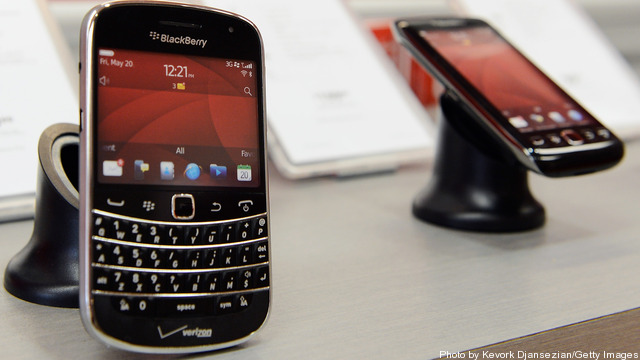
Several weeks back, at a
GTRA Council Meeting, I heard my former CIO at EPA, Malclom Jackson, talk about “Developing a Secure Mobile-First Culture – the EPA’s Story.”
Among other points, he announced an “aggressive and accelerated procurement for new EPA collaboration tools”: one month to advertise, one month to decide, and four months to implement, so it is ready by November. Malcolm deserves credit on a number of fronts for pushing these ideas forward and quickly.
But it also reminded of a point about government that I experienced many times during my 30-plus years of government service at EPA: namely, senior managers in government repeat work that has been done in the past either because they do not know about it or choose to ignore it and start from scratch again.
I asked him if he was also working on the two functions that I had found important in my experience with doing this, provisioning content and dealing with limited bandwidth, and he said they were.
But I know from my experience at EPA that those two things are not going to happen in a short period of time. It took me three years to prepare EPA’s best content in a collaboration tool that supports limited bandwidth use on both desktop and mobile devices.
In my government experience, the 90-9-1 rule applies… only 1% will really use (new tools) and be doers and evangelists.”
I would have also felt better about what Jackson announced if he had mentioned it supported and followed the standards outlined by Federal CIO Steve VanRoekel in his Building a Digital Government Strategy.
One can do these things from the top down: That is, respond to the need for collaboration tools for an agency that work on mobile devices, procure them and hope that the employees put their content in them.
Or one can work from the bottom up: Use what employees are already using to put their content in to collaborate with others and see if those tools will scale up and federate.
We have all seen organizations procure yet another set of collaboration tools, only to then have a massive migration problem with legacy content and users still continue to use their tools of choice. For example, mobile has evolved from “This is the only tool we offer” (e.g. BlackBerry) to now Bring Your Own Device (BYOD) (e.g. iPhones, iPads, etc.)
So what should Malcolm and others in his situation do?
First, I would go around asking and looking for what has already been done and ask the real productive people at EPA, who are collaborating with others inside and outside the agency, what they are using (at EPA or outside of EPA) or would use if they had permission, and encourage others at EPA to try those pockets of excellence first.
Keep reading →
 What seemed like a simple objective, to develop and issue a standardized, electronically-verifiable identification card for civilian agency personnel, continues to encounter a barrage of technical and cultural challenges at a time when identification has become a critical component in the government’s efforts to embrace mobile and remote computing.
What seemed like a simple objective, to develop and issue a standardized, electronically-verifiable identification card for civilian agency personnel, continues to encounter a barrage of technical and cultural challenges at a time when identification has become a critical component in the government’s efforts to embrace mobile and remote computing. UPDATED. The Immigration and Customs Enforcement agency announced it plans to buy iPhone services for more than 17,600 employees.
UPDATED. The Immigration and Customs Enforcement agency announced it plans to buy iPhone services for more than 17,600 employees.
 The new computing generation has burst on the federal scene in a big way. The latest manifestation is solicitations coming from two cabinet agencies.
The new computing generation has burst on the federal scene in a big way. The latest manifestation is solicitations coming from two cabinet agencies. Research in Motion’s BlackBerry phones have historically been the device of choice for secure
Research in Motion’s BlackBerry phones have historically been the device of choice for secure 
 Perhaps it was inevitable. With all the computing power in the palms of a critical mass of end users, commercial off the shelf (COTS) mobile devices – smartphones, tablets and small factor computing devices of various hues and types – are now also getting into the hands of warfighters, first responders, federal law enforcement personnel, covert operators, command and control operation center staffs, and many other government workers.
Perhaps it was inevitable. With all the computing power in the palms of a critical mass of end users, commercial off the shelf (COTS) mobile devices – smartphones, tablets and small factor computing devices of various hues and types – are now also getting into the hands of warfighters, first responders, federal law enforcement personnel, covert operators, command and control operation center staffs, and many other government workers. Verizon is teaming up with a Vienna, Va., provider of government-grade encrypted voice-calling software to deliver secure mobile calling capabilities to the U.S. government.
Verizon is teaming up with a Vienna, Va., provider of government-grade encrypted voice-calling software to deliver secure mobile calling capabilities to the U.S. government. When it comes to
When it comes to  The days of government-issued BlackBerrys may be waning, but the reason may have less to do with the overwhelming popularity of iPhones and Android-operated devices than with the growing maturity of back-end systems used by agencies to
The days of government-issued BlackBerrys may be waning, but the reason may have less to do with the overwhelming popularity of iPhones and Android-operated devices than with the growing maturity of back-end systems used by agencies to